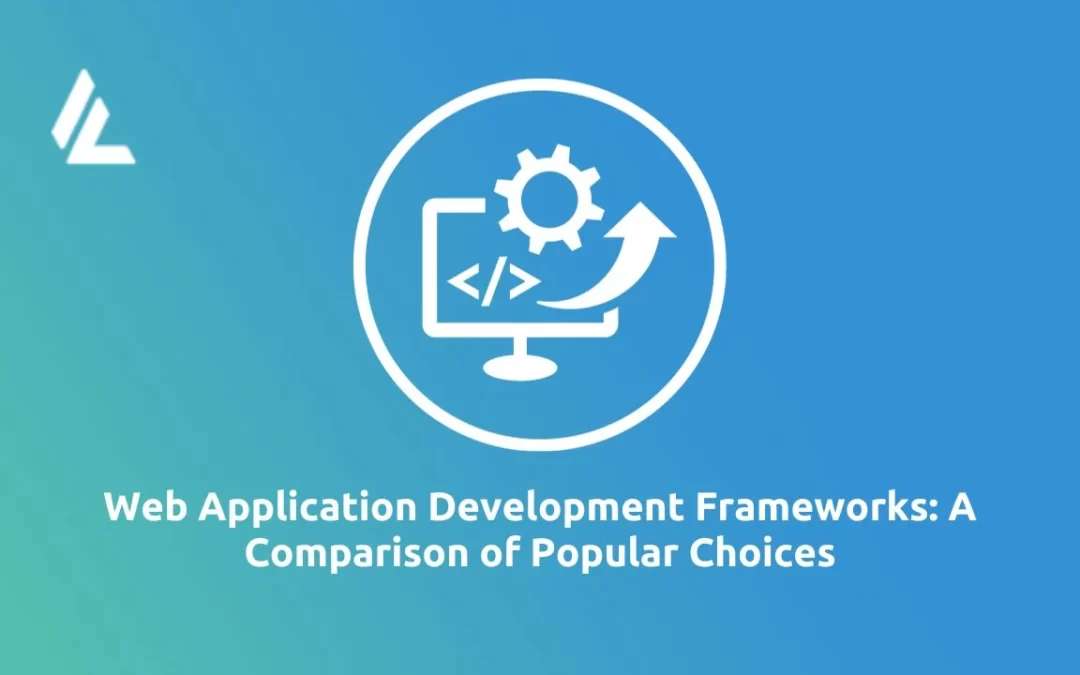Table of Contents
The landscape of web application development has evolved dramatically over the years, with many tools and frameworks designed to simplify the process. This blog post delves into web application development frameworks, offering a detailed comparison of some of the most popular choices available.
From the early days of basic HTML and server-side scripting to the complex and user-centric web applications of today, these frameworks represent a culmination of industry experience and innovation.
Whether you’re a seasoned developer or a newcomer to web development, this post provides valuable insights to help you navigate the diverse framework options and make informed decisions aligned with your project’s unique requirements.
By the end of this article, you’ll have a clear understanding of which framework might be the best fit for your next web development project.
What is a Web Application Development Framework?
A web application development framework is the foundation of modern web development, offering a pre-constructed structure equipped with tools, libraries, and established conventions.
These frameworks streamline the development process by reducing time-to-market and maintaining code consistency. They empower developers to efficiently tackle complex projects, allowing them to focus on application specifics rather than reinventing solutions.
The frameworks enforce best practices and coding standards, ensuring the resulting web applications are not only functional but also easily maintainable. In essence, web developers rely on these frameworks as indispensable companions, enhancing productivity, code quality, and scalability in the ever-evolving world of web development.

The Importance of Choosing the Right Framework
Choosing the appropriate web application development framework is a critical decision that profoundly impacts the success of your project. This choice significantly influences the speed of development, scalability to meet future needs, long-term maintenance ease, and the overall performance of your web application.
Different frameworks offer varying levels of support, documentation, and optimization, making it essential to align your choice with project timelines, growth expectations, and performance requirements.
In essence, the framework you select plays a pivotal role in shaping the project’s success across multiple dimensions, making it a decision that demands careful consideration and evaluation.
To help you make an informed decision, we’ll compare five popular web development frameworks.
Angular
Angular, developed by Google, is a robust front-end framework. It’s known for its powerful features, including two-way data binding, dependency injection, and modular architecture. Angular is an ideal choice for large, complex applications that require real-time updates and complex user interfaces.
While it has a steep learning curve, its strong community support and frequent updates make it a valuable tool for web developers.
React
React, developed by Facebook, is a popular choice for building user interfaces. Unlike Angular, it’s a library rather than a complete framework.
React’s component-based architecture simplifies building interactive and reusable user interface components. It’s well-suited for applications where user experience is paramount and offers excellent performance due to its virtual DOM.
Vue.js
Vue.js is a progressive framework that aims to be adaptable and incrementally adoptable. It strikes a balance between the robustness of Angular and the simplicity of React. Vue.js is known for its easy learning curve and flexibility, making it an excellent choice for small and large projects.
It offers a simple yet powerful templating system and a smooth integration process with existing projects.
Django
Django, a high-level Python framework, is a top choice for back-end web development. It follows the “batteries-included” philosophy, offering a wide range of pre-built modules for authentication, database, and form handling. Django is highly secure, making it an excellent choice for applications that deal with sensitive user data. Its clear documentation and strong community support also contribute to its popularity.
Ruby on Rails
Ruby on Rails, often referred to as Rails, is a web application development framework written in Ruby. Rails is known for its convention over configuration principle, simplifying development by providing sensible defaults. It encourages best practices and follows the Model-View-Controller (MVC) pattern. Developers appreciate Rails’s rapid development capabilities, making it ideal for startups and small to medium-sized projects.
Node.js
Node.js is not a traditional web framework but a runtime environment that allows developers to build server-side applications using JavaScript. It’s particularly well-suited for building real-time applications and APIs.
Node.js offers a vast ecosystem of packages through npm (Node Package Manager), and its event-driven, non-blocking architecture enables high scalability.
Also, check out our blog compiled on the Responsive Web Development Frameworks to help you improve your web development journey.
Comparison Criteria
a. Project Complexity:
Assessing the complexity of your web application project is a critical initial step in choosing the proper framework. For large, feature-rich applications with intricate user interfaces and real-time data needs, Angular and Django provide robust solutions. Angular excels in real-time updates, while Django handles data management and security.
In contrast, smaller projects can thrive with React or Vue.js, offering simplicity and speed. React is ideal for a robust user experience with its component-based architecture and virtual DOM, while Vue.js balances power and clarity.
By evaluating your project’s size and requirements, you can make an informed choice that best aligns with your web application’s goals.
b. Learning Curve:
Evaluating the learning curve of a web development framework is a pivotal factor that directly impacts a project’s timeline and the adaptability of a development team. React and Vue.js stand out for their user-friendly and approachable nature, characterized by simpler, component-based architectures.
Developers, whether experienced or newcomers, can swiftly grasp these frameworks’ fundamentals and begin developing web applications efficiently. In contrast, Angular, while powerful and feature-rich, is often recognized for its steeper learning curve.
This complexity stems from its extensive feature set and reliance on TypeScript and a dependency injection system, making it a more challenging framework for beginners. When selecting a framework, it’s crucial to weigh the learning curve against your project’s timeline and your team’s expertise, with React and Vue.js offering quicker onboarding for faster project starts.
At the same time, Angular’s depth may be advantageous for more complex, long-term endeavors. It can be very efficient in creating SEO-optimized web development page structures. The newcomers can swiftly make changes to a website to make it more responsive and hence give the website better SEO scores.
c. Performance:
When assessing the performance needs of your web application, React’s utilization of a virtual DOM stands out as a crucial advantage. The virtual DOM optimizes rendering by updating only the changed parts of a webpage, resulting in faster and more responsive applications—particularly beneficial for real-time updates and intricate user interfaces.
Node.js, while not a conventional web framework, offers exceptional performance due to its non-blocking I/O model, allowing concurrent processing of multiple operations, leading to highly responsive and efficient applications.
For projects where speed, responsiveness, and real-time updates are paramount, considering React’s virtual DOM and Node.js’s non-blocking I/O can significantly enhance overall performance and deliver a superior user experience, aligning your web application with the dynamic requirements of the online world.
d. Community and Support:
Robust and engaged communities, along with regular updates, are cornerstones of successful web development projects. These active communities offer an invaluable support system where developers can collaborate, share knowledge, and troubleshoot issues, significantly expediting problem-solving and enhancing the learning environment.
Meanwhile, consistent updates, encompassing feature improvements and security patches, are essential to keep web applications up-to-date and competitive. They ensure that your project remains aligned with industry standards and is fortified against emerging threats, contributing to the enduring success and security of your web development endeavors.
As we have reached the end of your learning about web development applications, how about checking out how professionals create web application development?
Check out IndoAge’s professional web development services that are designed with your business needs and future in mind.
Conclusion
Choosing the proper web application development framework is a critical decision that can impact the success of your project. Each framework mentioned in this comparison has its strengths and weaknesses, and the best choice depends on your specific project requirements and your team’s expertise. Whether you prioritize speed, scalability, or ease of use, there is a framework that can meet your needs.
Remember that while these are some of the most popular choices, the technology landscape is ever-evolving. As you embark on your web application development journey, stay informed about the latest developments in the web development world to ensure you’re always using the best tools for the job. Happy coding!

